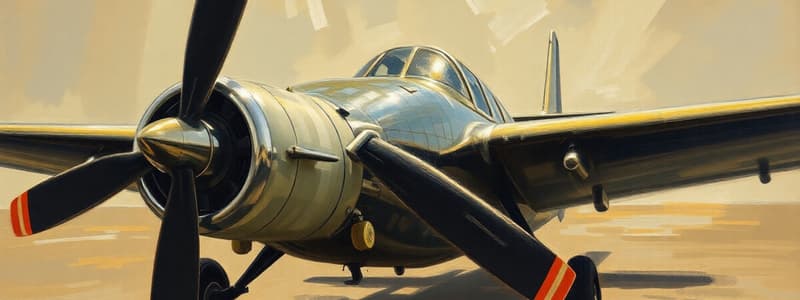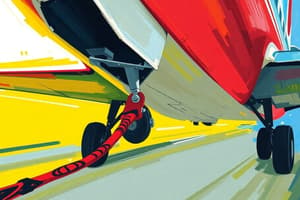Podcast
Questions and Answers
What characterizes a direct nose wheel steering system?
What characterizes a direct nose wheel steering system?
- It uses hydraulic power for operations.
- It involves a direct mechanical connection. (correct)
- It operates without any physical connection to the pedals.
- It transmits signals through electric wires.
In what kind of steering system are signals transmitted via cables or electric wires?
In what kind of steering system are signals transmitted via cables or electric wires?
- Hydraulically powered, indirect steering system. (correct)
- Magnetic steering system.
- Direct nose wheel steering system.
- Indicated power steering system.
Which of the following is NOT a feature of the direct nose wheel steering system?
Which of the following is NOT a feature of the direct nose wheel steering system?
- It allows for synchronized steering inputs.
- It relies on hydraulic systems. (correct)
- It connects directly to the rudder pedals.
- It mechanically connects to the nose gear.
What is the primary function of the steering control valve in an indirect steering system?
What is the primary function of the steering control valve in an indirect steering system?
How does a following-up steering system primarily differ from a direct steering system?
How does a following-up steering system primarily differ from a direct steering system?
Flashcards are hidden until you start studying
Study Notes
Direct Nose Wheel Steering
- Direct mechanical connection between rudder pedals and nose gear
Indirect Nose Wheel Steering
- Hydraulically powered
- Transmits signals from rudder pedals or steering wheel through cables or electric wires
- This signal is sent to a steering control valve
Studying That Suits You
Use AI to generate personalized quizzes and flashcards to suit your learning preferences.




